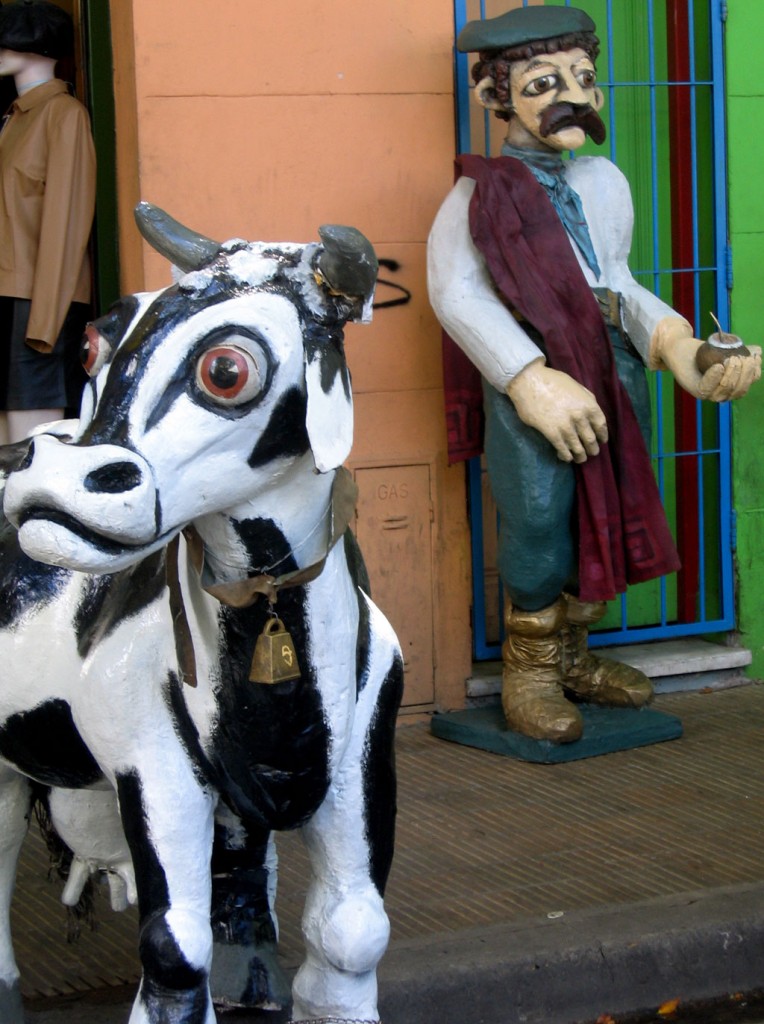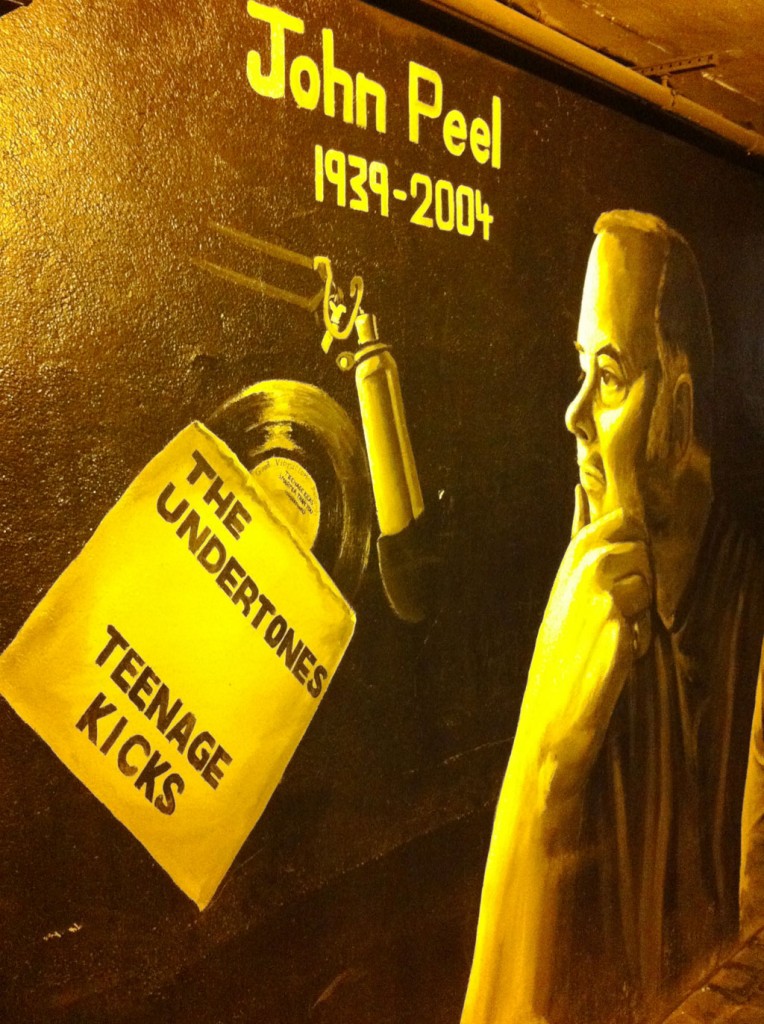
* This is the sixth post in a new weekly series, highlighting stories from my travel-writing archive – many with no link online. I’m running them here in full. Subscribe to posts at this website for more.
I’d just never cut it as a gaucho. While the notion of life as an enigmatic loner, wandering the Pampas of Argentina with only a sturdy knife and a trusty steed for company, may have a romantic frisson, in reality I’m useless on horseback, have no aptitude for cattle ranching and don’t cut an attractive figure in the traditional loon pants known as bombachas.
In one of the gaucho’s traditional skills, however, I do have a fighting chance of cutting the mustard: preparing a good steak.
Like any meat-eating male with a bag of briquettes and a penchant for scorching cocktail sausages to within an inch of their lives, I’m keen to my flex barbecue muscles come the first hint of summer.
Now, thanks to a trip to Buenos Aires and a crash-course in the fine art of the grill at a legendary steakhouse, I can hold my head up high as a bone-fide grillmaster, a skill steeped in the meat-handling heritage of Argentina’s gaucho tradition.
So it is on a sunny Saturday afternoon in Buenos Aires we gather at La Cabaña, located in the city’s fashionable Recoleta district, for the three-hour Argentine Barbecue Master course. This Buenos Aires institution, reopened in October 2003 having been acquired by hotel and leisure company Orient Express, last year celebrated the 70th anniversary of the opening of the original restaurant in 1935.
La Cabaña works with over 3,000kg of top-quality meat per month, sourced from 75 farms in the wet pampas region around the city. The meat is hung for 30 days to make it more tender and sealed in plastic wrapping before delivery to La Cabaña.
The most popular cut of steak in the restaurant is the Baby Beef (a 14oz cut off the rib, similar to a sirloin or Porterhouse), which retails for around £8.50. The King’s Beef, a new 43.9oz rib eye named after King Carlos of Spain, is now on the menu at £20.
Beyond the understated facade, an open kitchen gives way to an opulent dining room with a series of private rooms tucked away in discrete alcoves. Modern artworks adorn the walls and two giant cows guard the entrance, while the centrepiece is a traditional Argentine asado, an open fire of glowing coals over which cuts of meat are cooked on a spit.
While we prepare for class, the staff, attired in sleek, black uniforms and going about their business with a cosmopolitan air, busy themselves by preparing the covers for the evening service.
The course combines theoretical tuition on the different cuts of meat with a practical application of barbecue techniques. Hence, before we are let loose with a hot grill and a huge tenderloin, we first eschew the aprons for notepads and pens.
Grill chef Daniel Leguisamo starts by examining the 19 most commonly used cuts of meat used in Argentina (from a possible 27), far more than other meat-eating countries.
As we group around a pin-the-tail-on-the-cow-style display board, Daniel points out how several cuts would not even make it onto French menus while, in keeping with the gaucho tradition, every part of the animal in la Cabaña’s kitchen.
Different cuts have different flavours and the wood-fired oven, fired with quebracho blanco, a slow-burning wood from the northeast of Argentina, ensures that the meat cooks slowly, maintaining its flavour and absorbing some of the distinct perfume of the wood.
After a round of choripan, bread toasted over the grill, stuffed with a grilled sausage and accompanied by a glass of Argentina’s favourite varietal, Malbec, we wrap up with the ten commandments of a good grill, notably that the meat is cooked from room temperature and the embers moved to distribute the heat evenly during cooking.
Aprons on and hands scrubbed, we then start gently with the practical session, the preparation of the sweetmeats, kidneys and blood sausages to whet the appetite and test our ability to weather the furnace-like fury of the grill.
Suitably warmed up, head chef Damian Gelati rolls up his sleeves and takes me on one side. It’s time to go to work.
With the smell of sizzling meat whipping my gastric juices to a frenzy, we move onto the house speciality: the lomo, or tenderloin medallion, also known as the Argentine diamond. Under Damian’s watchful eye, I remove the fat with a viciously sharp knife, cut off a 400kg portion and pummel it furiously to soften the meat.
“Imagine it’s the face of someone you hate,” smiles Damian and he sets about the meat with bare knuckles and a vaguely demented look in his eye.
He continues: “There are two secrets to preparing the perfect steak. You have to maintain the temperature of the grill at a steady 120 degrees centigrade and only turn the meat once during cooking so as not to loose the flavour.”
The cooking itself is more straightforward. We first coat the grill in fat, rubbing the grease into the ridges to avoid sticking, and then sprinkle salt onto the meat. “The meat is cooked plain, not coated in sauces like they do in the United States,” he winks with a note of pride.
We cook the steak for five minutes per side before serving it on a thermal plate. Prepared and served in a few minutes, the simplicity of the process ensures it retains the very best of its natural flavour.
In fact, the only condiment is a dash of chimichuri, a lightly spicy sauce of wine vinegar, garlic, laurel leaves, oregano, parsley, paprika and dry pepper.
The taste? Melt-in-the-mouth delicious and cooked to perfection – even if I do say so myself.
I may never don a pair of chaps and rustle steeds in the pampas, but give me a knife, a slab of meat and a fine night in the back yard this summer and I’ll be the original lone-riding gringo gaucho.
* This story was first published in the Weekend Financial Times in 2006.





